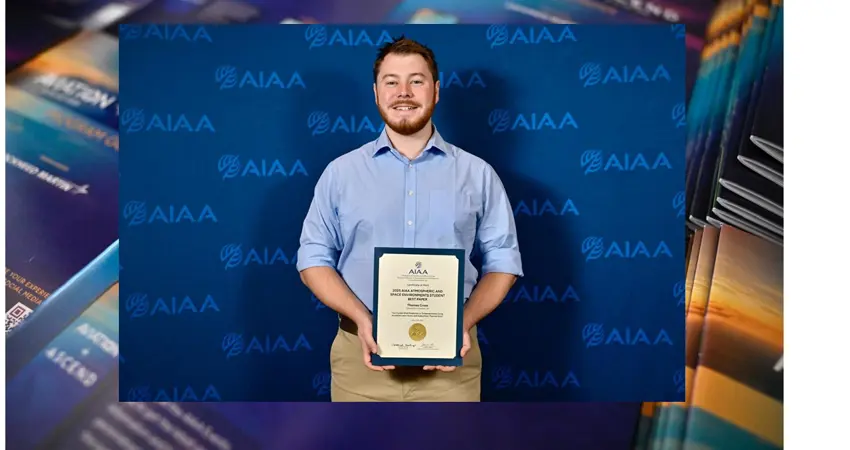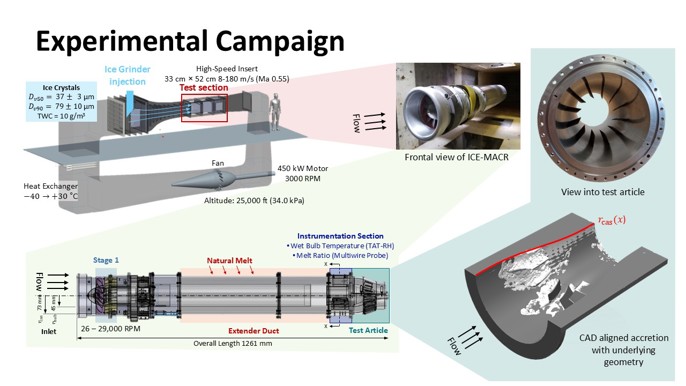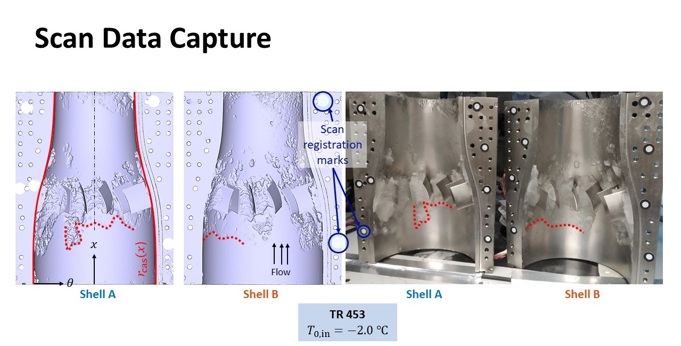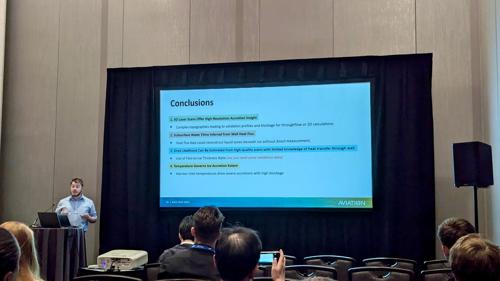29 Sep 2025
Thermofluids Engine Icing Group Win AIAA Best Paper for Second Year Running
Thermofluids 3rd year DPhil student, Thomas Cross, was awarded Best Student Paper at the 2025 American Institute of Aeronautics and Astronautics (AIAA) Aviation Forum in Las Vegas

This achievement represents a notable back-to-back success for the Oxford Thermofluids Institute (OTI) based Engine Icing and Particle Deposition Group, highlighting the group’s world-leading work on characterising jet engine ice crystal icing, a critical challenge for flight safety.
The 2025 Best Student Paper in Atmospheric and Space Environments recognised the originality, technical quality, clarity, and research impact of the paper titled Ice Crystal Shed Prediction in Turbomachinery Using Accretion Laser Scans and Subsurface Thermal Data. The paper was authored by Thomas Cross, a third-year DPhil student in the CDT for Future Propulsion and Power. Co-authors included Dr Natan Zawadzki, Professor Matthew McGilvray, and Professor David Gillespie, all from the Oxford Thermofluids Institute (OTI) in the Department of Engineering Science.
Jet engines at high altitudes are vulnerable to ice crystal icing, which can cause reduced performance or compressor damage when large chunks of ice break off and hit engine parts. Unlike icing on wings or fans, ice inside compressors develops when tiny ice crystals are ingested, melt, and then refreeze on warm engine surfaces. This process produces complex, irregular deposits that are difficult to model and predict accurately.
The group’s winning conference proceeding presented a new shed analysis approach for ice crystal deposits by using detailed laser scans from previous experimental work conducted at the National Research Council of Canada, to better capture ice formations. These shapes were then assessed with temperature readings beneath the ice to predict breakup and reduce uncertainty about how much ice is shed, supporting safer engine design. These efforts build on over a decade of collaboration between Rolls-Royce plc. and the icing research group. This work was also supported by the EPSRC and Trinity College, Oxford.
“It’s exciting to see that our research is not only valued by the global icing community and the AIAA but is also helping shape safer, more resilient engines for the future of aviation.”


This success follows the same team’s best paper award last year at AIAA Aviation Forum 2024, and a previous DPhil student in the group winning the same award in 2018.
Tom says, “Winning this award two years running is both humbling and hugely motivating. It reflects the hard work of our team at Oxford, the strength of our long-standing collaboration with Rolls-Royce, and how we really try to make the most out of every element of experimental data we collect”.

Looking ahead, the group is developing Oxford’s new NWTF+ Icing at Altitude Wind Tunnel, which will offer world-leading facilities to study ice crystal behaviour. Understanding aviation icing will remain vital to the future of air travel, especially with the challenges brought by cryogenic liquid hydrogen propulsion, which is another major research focus for the OTI as part of a £9.5M cross-university collaboration.




